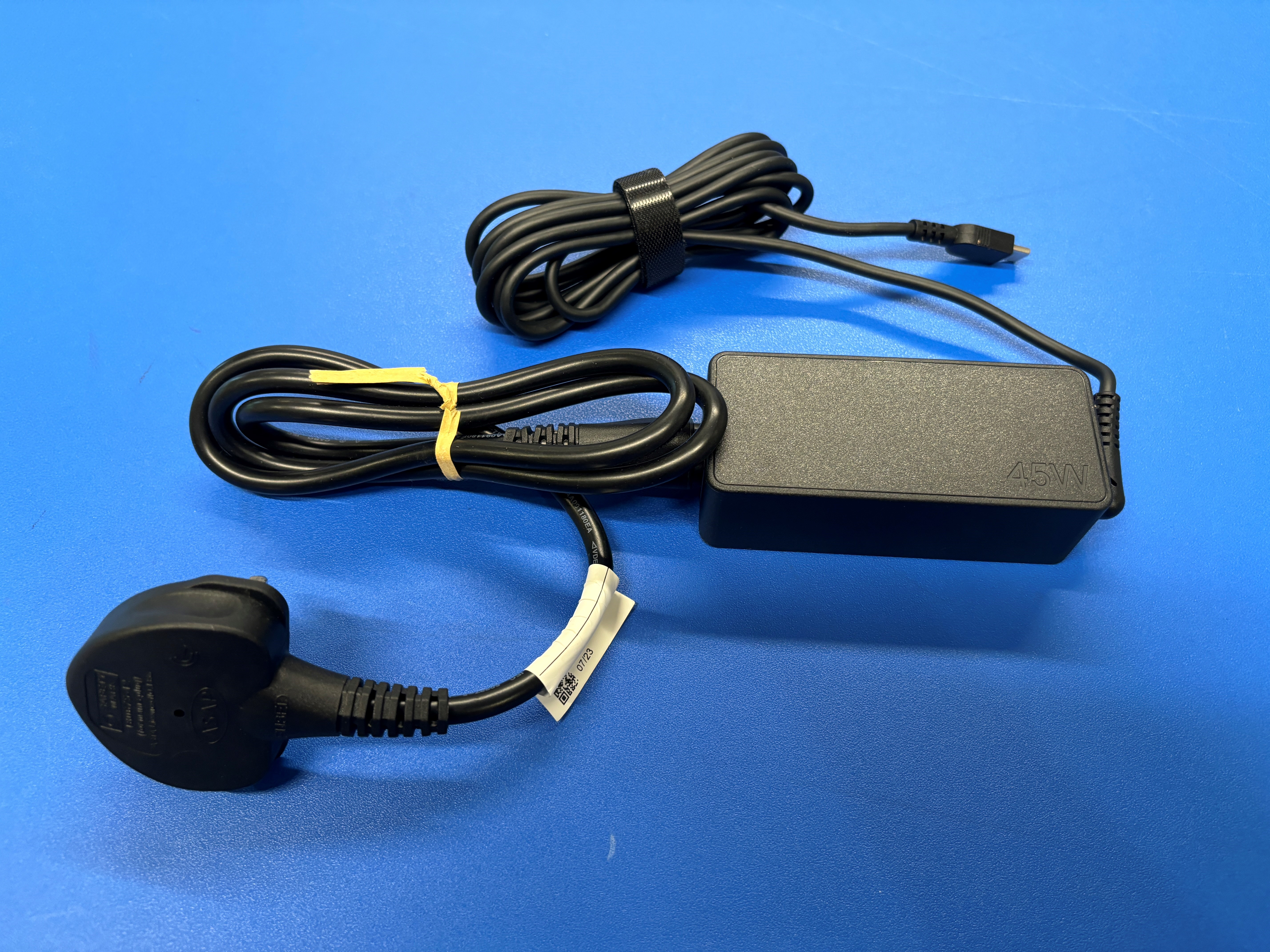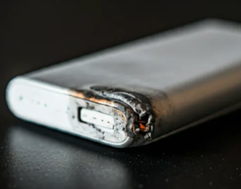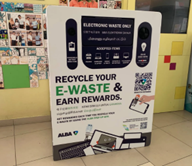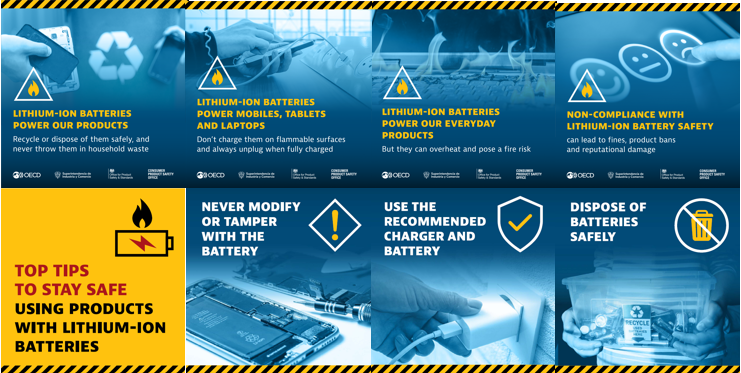Safety Tips for Consumer Devices Powered by Lithium Ion Batteries
Safety Tips on Lithium-Ion Batteries
Lithium-ion batteries are often used in consumer electronic devices and household appliances, including mobile phones, laptops, and vacuum cleaners.
While these batteries are convenient, they can overheat or explode if incorrectly used, charged or are damaged. Lithium-ion battery fires can be hard to extinguish and dangerous.
More safety tips for consumer devices powered by lithium-ion batteries
-
Choose
-
Before purchasing, check if the device has been recalled in any region. Visit the CPSO's website for product safety alerts and recall notifications.
-
Verify that the device's AC adaptor (aka charger) has a valid SAFETY Mark. You may verify the validity by searching for the SAFETY Mark number, as well as the device's brand or model in the CPSO's public registry.

-
Buy from sellers that provide aftersales services, e.g. locally available customer service centres and warranty services.
-
Use
-
Only use the manufacturer’s recommended charger and battery for the device.
-
Follow the manufacturer's instructions for charging the device and the associated lithium-ion battery.
-
Do not use damaged batteries, and never modify or tamper with the device's battery. Do not charge devices which have lithium-ion batteries that are suspected to be damaged, e.g. bloated or swollen battery, signs of chemical leakage, and batteries that feel excessively hot during charging.
-
Monitor products while charging and unplug when the battery is fully charged to prevent overcharging.
-
Never charge your device under your pillow, bed, or couch, which may restrict airflow and potentially cause overheating and fire.
-
Avoid dropping or applying excessive force to the device, which may damage the internal components and pose a risk of short-circuiting.
-
Keep devices and batteries away from direct sunlight, heat sources, and moisture.
-
Check
-
Regularly inspect the device and the lithium-ion battery for any signs of damage, leakage, or unusual odours.

-
If any abnormalities are detected, stop using the device and seek assistance from the authorised distributor/ service provider on repair, replacement or disposal steps.
-
Dispose
-
Do not dispose of any batteries into general bins or blue recycling bins as that may create fire hazards.
-
Tape the ends or wires of rechargeable batteries and seal any leaking batteries in a leak-proof container or bag before recycling them. This reduces the risk of short circuits and fire hazards.
-
In Singapore, the National Environment Agency (NEA) provides e-waste recycling programmes for individuals and households. You may drop off your e-waste at designated recycling points to ensure proper recycling.

-
For more information on e-waste recycling requirements and to locate recycling points, you can visit the NEA's website.
By following the above safety tips, consumers can ensure the safe use of electronic devices powered by lithium-ion batteries.


